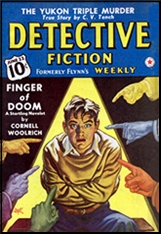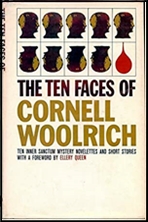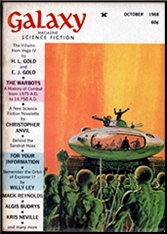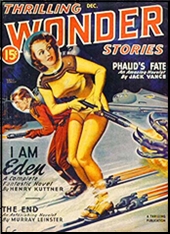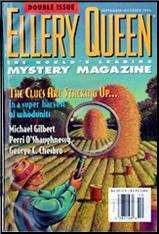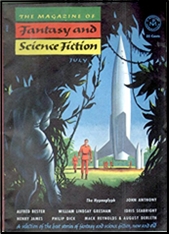Sat 10 Sep 2022
Pulp Stories I’m Reading: BRUNO FISCHER “Deadlier Than the Male” (Then and Now.)
Posted by Steve under Pulp Fiction , Stories I'm Reading[6] Comments
Back then: January 1968. I said:
BRUNO FISCHER “Deadlier Than the Male.†Novelette. Published in Dime Mystery Magazine, May 1945. A soldier’s buddy comes home from the war to check on his friend’s wife, who seems to have changed. Murder welcomes him at the door. Fairly obvious ending. (2)
Now:

While on furlough and with his buddy is still off fighting the war in Germany, Sgt. Peter Cole visits his friend’s wife, whose letters to him have become fewer and fewer, and what’s worse, less passionate. The woman who greets him is beautiful and outwardly caring, but Cole senses something is off.
Hearing a small noise in the bedroom and his suspicions aroused, he forcibly decides to check it out. What he does not expect is to find is a dead man in a closet. Knocked unconscious almost immediately, the next thing he knows is being woken up by a cop in the alley behind his friend’s wife’s apartment. Both of them head back in, but of course the body is missing.
It’s a good opening, and Fischer always had a good way with words, so this one starts out with a lot of promise. But sometimes the openings of stories by even good authors fail to fulfill early expectations, and such is the case here. What follows is a decent enough detective story, but it runs a little too complicated, and what Fischer failed to do is make it interesting as well. I wish I could say otherwise, but there were no sparks in this one for me.
Rating: 2 stars.
